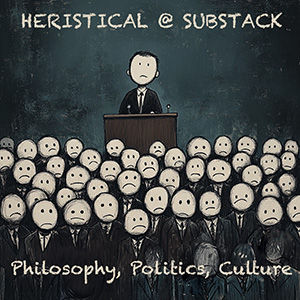
There are two primary philosophical approaches to the ethics of abortion. I shall describe how I think each might apply to abortion in the second trimester when the fetus is more developed. Recent attempts in the United States to limit abortion during this time period make it worth considering some possible grounds for an alternative viewpoint. Some of the recent attempts may be based on particular religious beliefs that legislatures should refrain from imposing on the general population. My concern will just be with positions that might be justified or rebutted on nonreligious grounds.
1. The first approach is concerned with the significance of the developmental stage of the fetus. Some philosophers think that it is important for the moral permissibility of abortion whether the fetus is at a stage where parts of its brain exist that support a capacity for consciousness and self-consciousness. This is because these capacities (in particular for self-consciousness) even if not presently exercised are thought by many to be essential to a living thing being a person. If the fetus in the second trimester does not have brain structures supporting these capacities, it would not yet be a person. This is a common philosophical conception of what it is to be a person; it is not necessarily a legal conception of personhood. According to this philosophical conception, a fetus could fail to be a person even if it were sentient (including having the capacity for pain). This is because having the capacity for sentience (roughly, capacity for physical sensations also had by many animals that are not persons) is not the same as having the capacity for consciousness (roughly, as I here use the term, capacity for thought) and self-consciousness. (Whether the fetus has or lacks any of these capacities is an empirical scientific issue. The moral significance of the capacities is a philosophical issue.)
Why is it important whether the fetus is at a stage where it is a person? Some philosophers think it is important because they think that persons have stronger moral rights against being killed than other sorts of living beings (such as fish or cats). If the fetus is not at the stage of being a person it may still have the potential to become a person but many philosophers do not think that potential to become a person is enough to give one a strong claim not to be killed. In general, potential to be a certain type of entity does not make it morally appropriate for something to be treated as that entity is treated (e.g., cat embryos need not be treated as cats). This is one reason why many philosophers think that early human embryos may be destroyed even though they too have the potential to become persons. This potential can make them more valuable than embryos without that potential (e.g., cat embryos) but having value in virtue of potential is not the same as having a strong right not to be destroyed.
Another reason some philosophers think it is important whether the fetus is at a stage where it is a person is that the death of a being is often thought to be bad for it because it loses out on goods it would have had in its future. Suppose the fetus has not yet developed into a person and so a person is yet to arise from the fetus if it is not aborted. Then, some argue, an abortion that prevents the future life of that person with all its goods from coming into existence (as is also done by contraception or abstinence) would not deprive the fetus of its future life, it does not lose out on goods it could have had in its future. This is because, the argument continues, the future life of that person who was prevented from existing by an abortion would not have been the fetus’ future life, given that the fetus is not that person. On these grounds, some argue that its death is not bad for the fetus given that it would not have continued on as a fetus.
2. The second philosophical approach bypasses the need for empirical information about what brain structures are present at different stages of fetal development. This approach argues that even if a fetus were a person, abortion could still be morally permissible because sometimes it is morally permissible to kill persons who are imposing on other people’s bodies. To show this it is useful to consider one’s responses to what are called hypothetical cases or imaginary thought experiments. The philosopher Judith Thomson (in her “A Defense of Abortion”) constructed the following famous thought experiment dealing with a non-abortion case that she thought would help us think about abortion by analogy:
A person is dying of kidney failure and the only thing that can save his life is to be attached to your kidneys for 9 months, after which time he can safely be detached. Thomson thinks it would be permissible for you not to attach him and so let him die. If you did attach him, it would be generosity beyond the call of duty because even his urgent need does not give him a moral right to such use of your body. However, without your permission, his friends attach him to you. The only way to detach him would either lead to his death as a result of not using your kidneys or as a result of killing him in the process of detachment. Thomson thought that it would be permissible for a doctor to detach the person at your request even though he is not responsible for being attached and so morally innocent in that sense. The reason she gave was that if he were not removed he would get to be where he had no right to be even to save his life. However, even if this is true might he have a right to be there in order not to be killed in removal, since many think there is a moral distinction between killing someone and letting him die?
To answer this objection and try to argue for the permissibility of abortions, some think it helps to use additional hypothetical cases. So let’s do a bit of philosophy (following a path I used in my book Creation and Abortion): Assume for the sake of argument that the fetus (and also the earlier embryo) is a person from conception on. Imagine that it has been created outside a woman’s body (or that it has fallen out of her body where it started). It might have been created by rape of the woman or by her having voluntary sex when contraception failed or perhaps by her deliberately creating it. Next, ask yourself for each way in which it might have been created, if you think she is morally required to put the fetus into her body (or back into her body), carry it for nine months and go through labor and delivery if this is needed to save its life or instead whether she is morally permitted to let this fetus die. Some things to consider that might help in answering these questions are whether the genetic connection by itself is strong enough to underwrite such a duty, whether the fetus is worse for living and dying than never having been created at all, how much someone would have had to do to avoid creating a fetus that it was known could not be saved (e.g., how much is one required to do to avoid a pregnancy that it is known will definitely end in irreparable miscarriage).
Suppose the woman is morally permitted to let the fetus die when it came to be created in at least some ways (e.g., if she was raped) rather than put it in her body. Next, suppose the fetus is already in her body (as in ordinary pregnancy), created as a result of one of the ways that you thought would have permitted her to let the fetus die if it were outside her body. If this fetus that is in her body is killed in an abortion, the killing would take from it only life it is getting from the use of the woman’s body, a use it had no right to have even to save its life since it could permissibly have been left to die, and this killing would occur for the purpose of ending that use which is providing it with life. This combination of factors is what makes some philosophers think that it is permissible for either the woman herself or a doctor to kill the fetus even if it is assumed, for argument’s sake, that the fetus is a person. Ordinarily, there is a big moral difference between letting someone die and killing them but not necessarily when what the person killed loses in being killed is just the life they get from assistance to which they have no right in order to be provided with that life.
We can combine the first and second approaches by simply imagining a nonperson, even a sentient one, first, dying outside a woman’s body and, second, being inside her body. Here the case for the permissibility of letting it die and also killing it so that the woman (who is a person) does not have to share her body against her will is especially strong. (This is so even if it is not always permissible to kill a nonperson that is not imposing on a person’s body, merely on account of it’s not being a person.) The first and second approaches can also be combined if we imagine (for the sake of argument) that the fetus gradually develops from a nonperson embryo to be a person and we want to determine what efforts should be made to abort before a person is present and whether this bears on the permissibility of killing once a person is present. (I discuss this issue further in Creation and Abortion.)
This is just a brief introduction to some of the ways philosophers have argued about abortion that seem relevant to second trimester abortion in particular. Needless to say, there has been much additional philosophical discussion pro and con about these approaches. I hope I have stimulated your interest in pursuing such arguments further because only reasoned argumentation can ultimately settle moral questions, not empirical research, surveys or personal stories on their own.
F. M. Kamm is Professor of Philosophy and Public Policy at Harvard Kennedy School and Professor of Philosophy, Faculty of Arts and Sciences, Harvard University. Bioethical Prescriptions and The Trolley Problem Mysteries are two of her recent books. This article is based on a talk given at Harvard Medical School.

